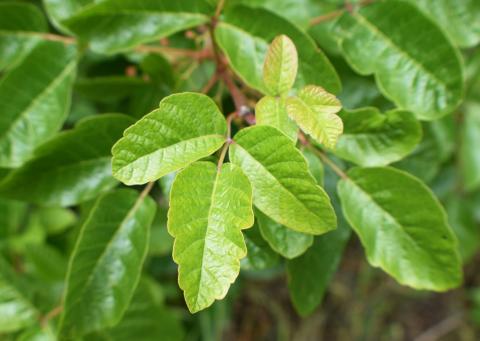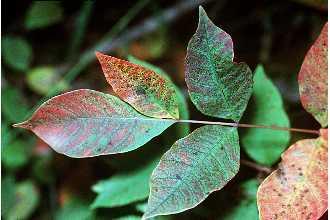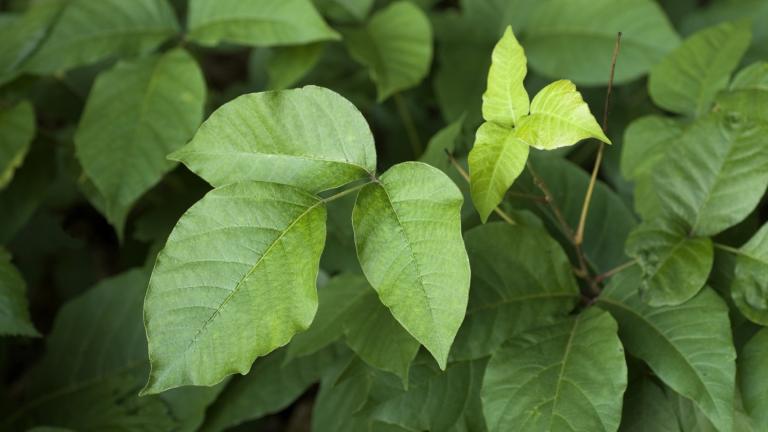Ahh, the return of spring and summer: sunny days, warmer weather, and time to get outside and experience Mother Nature.
Ugh the return of spring and summer: rain, bugs, and worst of all, poison ivy, poison oak and poison sumac.
As an avid mountain biker, spring and early summer is a time to rejoice, to get out and enjoy the trails again after being cooped up all winter. But for the last handful of years, it’s also time to experience my annual hate affair with rash-inducing, itch-creating, plants that flourish in the rain and sunshine.
Bikers, hikers and home gardeners need only to brush up against these plants, and the damage has been done. The oily sap on the plant’s leaves, called urushiol, is left on the skin, causing an allergic reaction and rash. This oil is in the leaves, stems and roots of poison ivy, poison oak and poison sumac. I get itchy just thinking about it.
Identifying the poisonous plant, and learning how to treat the symptoms after you have been infected, can help reduce the misery of dealing with these springtime menaces.
According to the MSU Extension, Michigan is home to both Western and Eastern poison ivy, although Macomb County is mainly home to the Eastern variety. Poison ivy grows in leaves of three and has a vining growth habit and aerial roots to secure it to trees and other objects. Leaves are shiny and often dark green, though coloration can vary with growing conditions. Leaflet margins may be smooth, irregularly toothed, or lobed.

Poison oak also has three leaflets like poison ivy but with rounded tips. The undersides of the leaves are fuzzy and lighter in color than the top. Poison oak typically grows as a shrub in the Eastern and Southern U.S. The shrub sometimes has white or yellow berries.
And poison sumac has clusters of seven to 13 smooth leaflets arranged in pairs. Poison sumac thrives in wet, swampy regions. A full-grown poison sumac tree can get up to 20 feet tall. This tree has drooping clusters of pale yellow, cream-colored or green berries.
The MSU Extension says allergic response to contact with urushiol can vary from person to person. Exposure can increase sensitivity over time. The symptoms of an allergic reaction to skin contact with urushiol can include rash, burning sensation, itching, and blistering. If you suspect that you came into contact with urushiol, wash the exposed areas of your skin immediately with soap and water or alcohol before the allergic reaction can occur. Removing the oil will prevent it from spreading to other parts of the body or to other people or objects.

There are many over-the-counter topical creams to help alleviate the symptoms of poison ivy. Symptoms should dissipate in two to three weeks. In severe cases, seek medical attention as oral steroids or antibiotics may be required particularly if the initial irritation leads to a bacterial infection. The eyes and lungs can also be affected. If poison ivy is burned, urushiol can be inhaled and cause lung irritation. If you suspect that your eyes or lungs may be affected by exposure to urushiol from poison ivy, seek medical attention.
Macomb County is home to many beautiful, relaxing trail systems. But that doesn’t mean precautions shouldn’t be taken. Stick to the established trail systems and avoid going off the paved or dirt paths, since that is where contact with these plants can be expected. Even if you stay on the trail, try to avoid brushing up against plant branches and tendrils that are stretching into your path just hoping to introduce themselves.
A chance encounter with poison ivy, poison oak or poison sumac shouldn’t prevent you from enjoying our trail systems. Educate yourself, be aware and enjoy the beauty that is all around you.
Don Gardner is a communications specialist for Macomb County Planning and Economic Development.







